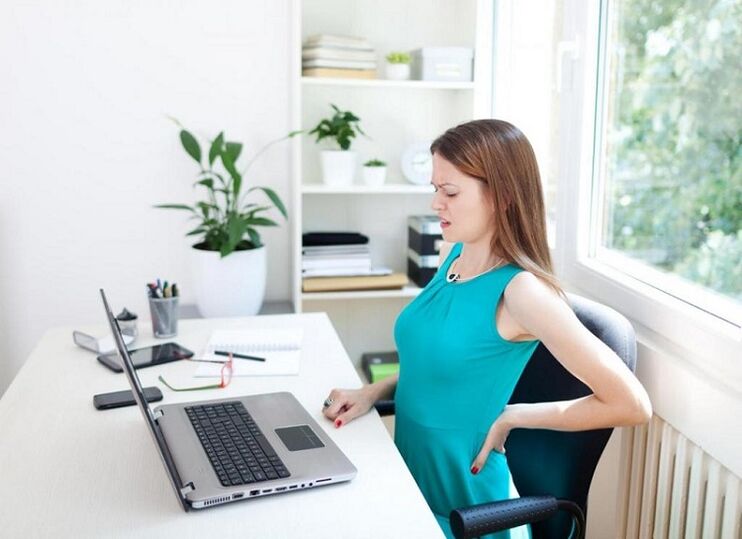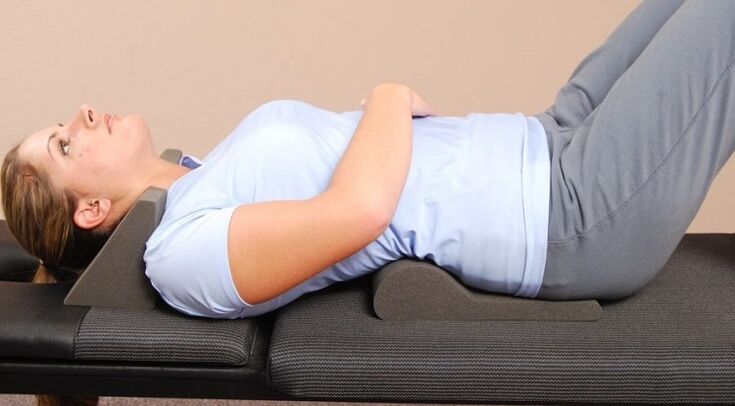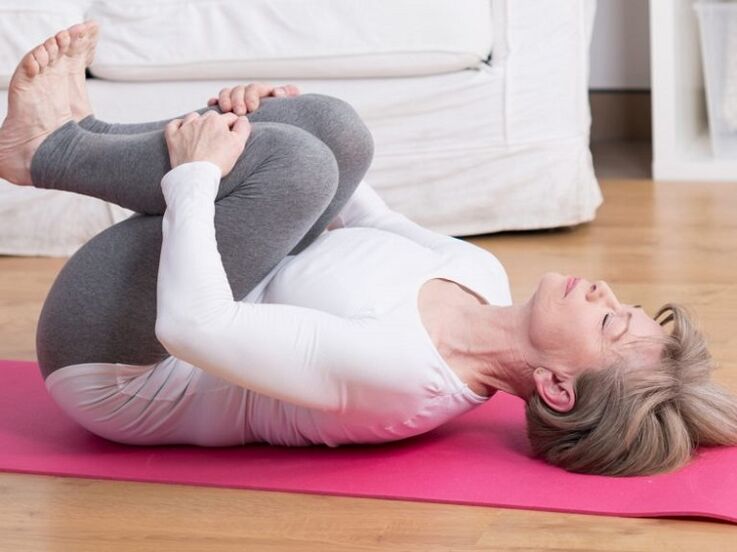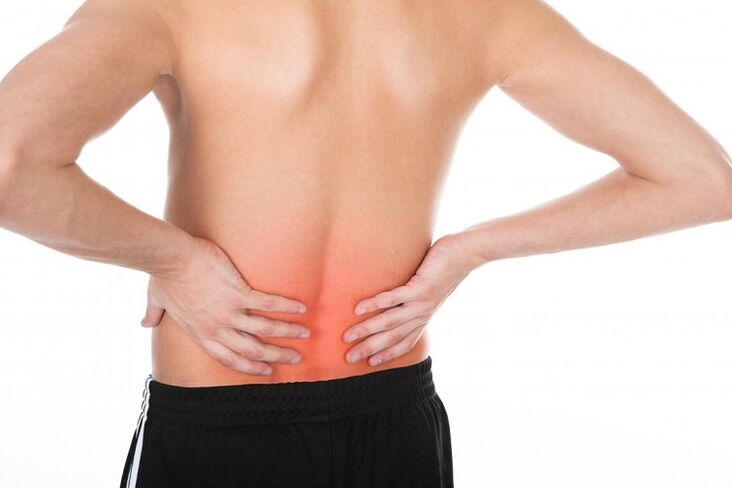
Osteochondrosis is a chronic disease of various parts of the spine in which degenerative and dystrophic changes in the intervertebral discs occur. Men aged 25-60 are more likely to suffer from this disease. The disease is typical of both young and old people. Women get sick less often and their symptoms aren't that obvious. At the initial stage of the disease, it is possible to achieve stable remission and get rid of pain and discomfort for many years.
What types of osteochondrosis are there by localization?
The classification of osteochondrosis of the spine has many forms and criteria. They differ in the location of the affected section and the severity. All types of osteochondrosis are pathologies fraught with destructive changes in cartilage and connective tissue.
The most common and, for a simple layman, most understandable classification, far removed from medicine, is based on the localization of the lesion:
- Cervical osteochondrosis - is characterized by occipital, cervical, and interscapular pain syndromes. Over the past decade, this disease has been increasingly diagnosed in young people.
- Osteochondrosis of the thoracic spine is very rare because it has more intervertebral discs than the cervical and lumbar spine combined, the intervertebral discs are smaller and thinner. Part of the load is taken up by the ribs. Therefore, degenerative and dystrophic changes rarely occur in the intervertebral discs of the thoracic spine.
- Lumbar osteochondrosis is common in people over the age of 40 who have sedentary and sedentary lifestyles. It is characterized by severe back pain, pinching of the nerves and arteries of the abdominal organs and many accompanying diagnoses of internal organs.
Stages of the disease
Depending on the flow rate, the degree of degenerative changes, the manifestation of symptoms, four stages of the disease can be distinguished:
- The initial stage is characterized by instability of symptoms. The patient is not in severe pain yet. Occasionally "shooting" pain in the affected area of the back is possible.
- The second stage is characterized by a significant deterioration in the interaction of the vertebrae due to the progression of degenerative processes in the intervertebral discs. The development of the disease at this stage is provoked by improper physical activity, a sedentary lifestyle.
- In the third stage, intervertebral hernias can develop (some patients will pass this fate). Sometimes there is severe back pain. Accompanying diagnoses arise that in one way or another affect all body systems. Symptoms vary depending on the location of the hernia and the location of the chondrosis.
- The fourth stage is the most difficult. The patient is unable to lead a fulfilling lifestyle and enjoy freedom of movement. Almost all postures bring with them acute pain at the site of the osteochondrosis localization. At this stage we can talk about the appointment of a disability for the patient.
Causes of occurrence
Osteochondrosis brings a lot of suffering, deteriorates the quality of life, can lead to total or partial immobilization of the patient and disability. What are the reasons for the appearance of this disease? They are as follows:
- Sedentary lifestyle, static sitting or lying in one position. Muscles atrophy, the vertebrae wear out cartilage and intervertebral discs among themselves. This process can take years, but inevitably leads to osteochondrosis.
- Modern young men and women go to the gym and perform exercises with a barbell and dumbbells, the incorrect execution of which leads to chronic diseases of the spine. For example, the wrong technique of the barbell squat exercise introduced surgeons and orthopedic surgeons to tens of thousands of young acute osteochondrosis and scoliosis patients.
- Also at risk are people who, due to their professional activity, have to sit in one position at the table for many hours in a row. According to WHO statistics, office workers make up the lion's share of patients with osteochondrosis.

The main symptoms of cervical osteochondrosis
The vertebrae in the cervical spine gradually lose fluid and become brittle. As a result of this process, veins and arteries become compressed. The nutrition of the brain is disturbed and as a result the death of its cells. Cervical osteochondrosis has the greatest negative impact on the part of the brain responsible for heart muscle activity. Often the visual or auditory nerve becomes pinched, leading to vision loss and hearing impairment.
Types of cervical osteochondrosis:
- radicular or the so-called "cervical radiculitis" - it is characterized mainly by severe pain in the back of the head, neck, head;
- Irritant reflex - discomfort in the chest, back, numbness of the fingers;
- Heart characterized by symptoms of cardiovascular disease.
Only an orthopedist or surgeon can make an accurate diagnosis. Regardless of the type of cervical osteochondrosis, the treatment is almost identical.

The main symptoms of osteochondrosis of the thoracic spine
The rarest type of disease. Symptoms of thoracic osteochondrosis are characteristic of many other conditions. An inexperienced doctor can often diagnose arrhythmias, angina, cardiomyopathy (pending EKG results), pancreatitis, or even gastritis. Only an experienced orthopedist or spinal surgeon can provide accurate information about the type of thoracic osteochondrosis.
With a pronounced pathological process, there is a disruption in the work of parts of the spinal cord. The main signs of osteochondrosis of the thoracic spine:
- Dorsago - sharp, excruciating pain in the chest, a feeling of shortness of breath, it seems to the patient that he is choking or the heartbeat is abnormal.
- Dorsalgia - the patient feels less discomfort than with dorsalgia. The pain is less pronounced and radiates into the hands, fingers (this is why doctors often confuse symptoms with diseases of the cardiovascular system).

Symptoms and consequences of osteochondrosis of the lumbar spine
The most common form of osteochondrosis is the lumbar spine. This is because the lower back is the most stressful in daily life.
In the first stage, the main symptom is a slight stretch in the lower back. Rarely do people value such minor complaints. As the intervertebral discs wear out, so do the negative symptoms. In particular, the patient can no longer lie or sit in one position for long due to pain.
In the third or fourth stage of osteochondrosis of the lumbar spine there are:
- Lumbago - sharp and sudden pain, the result of which may be partial immobilization of the patient;
- sciatica - unilateral entrapment of the sciatic nerve;
- Sciatica - squeezing of nerve endings in the lumbar spine;
- Weakness of the lower extremities, muscle atrophy, venous congestion, impairment of sexual function and the work of the abdominal and pelvic organs are also often observed;
- Radiculo ischemia - a failure of blood circulation as a result of vascular compression.

Generalized osteochondrosis
This type of disease affects not only the spine, but also the joints. Most commonly the shoulder and hip. The symptoms of generalized osteochondrosis are neurological in nature, in rare cases with lesions of internal organs due to circulatory disorders.
In the hip joint, the disease manifests itself in changes in the cartilage tissue and drying out of the synovial fluid. Over time, the joint partially and then completely loses its previous range of motion.

Polysegmental osteochondrosis
The manifestations of the disease are not in one, but in several parts of the body. For example, there is often a combination of the defeat of the third and twelfth vertebrae - in this case, osteochondrosis is considered polysegmental.
Therapy in this case is exactly the same as for the standard signs of cervical or thoracic osteochondrosis. Magnetotherapy and other physical therapy procedures have been shown to be excellent for exacerbating pain and discomfort due to polysegmental chondrosis. Now you know what types of osteochondrosis of the spine exist.
Medicines for osteochondrosis
Pharmacological agents for relieving the manifestation of symptoms of osteochondrosis can be divided into the following groups:
- Anti-inflammatory drugs - to relieve symptoms of pain and swelling from the affected area. There are two types - non-steroidal anti-inflammatory drugs and glucocorticosteroids.
- Painkiller.
- Muscle relaxants to relieve muscle spasms.
- Hondoprotectors - Medicines to improve the nutrition of the cartilage tissue.
- Vitamin-mineral complexes - to restore normal blood circulation and activate metabolism.
- Medicines to improve and restore the conduction of stimuli in nerve cells.
In some cases, you may need to resort to diuretics to relieve swelling of the muscles and connective tissue between the vertebrae. It is strictly forbidden to prescribe drugs to yourself - you can not only not cure the course of the disease, but also aggravate it.

Remedial gymnastics and physical education for osteochondrosis
Every orthopedic surgeon will confirm the importance of exercise for remission in the chronic course of osteochondrosis.
What sport is safe for osteochondrosis? It is better to give preference to swimming, stretching, pilates, body flex - those directions in which there are no sudden movements. Traumatic martial arts and weightlifting sports with osteochondrosis are prohibited. The patient should not work with a weight of more than five kilograms.
Don't underestimate the benefits of daily morning exercise. It should not be carried out on a case-by-case basis, but rather on an ongoing basis. Only in this case there are advantages for the spine. Simple hand swing, "mill", "bicycle" - exercises that are familiar to everyone from childhood help to stretch the back and relieve pain. All movements must be performed as smoothly and accurately as possible to avoid injury.

Office workers have to disconnect from their computers and warm up for five minutes every hour. This serves as an excellent prevention and treatment for an existing osteochondrosis.
Massage and manual therapy
Of all the treatments for osteochondrosis, this is the most comfortable. A lot depends on the choice of a specialist - both the result and the feeling. Types of massage for osteochondrosis - classic, acupressure, cans, hardware, honey.
With manual therapy, the situation is more complicated. First of all, this procedure is painful: Often the patients of manualists cannot hold back their cry of pain when manipulating the spine. Second, this procedure can be dangerous if the chiropractor has no experience. Choose specialists with good patient reviews, a real diploma and a wealth of therapeutic experience.



























